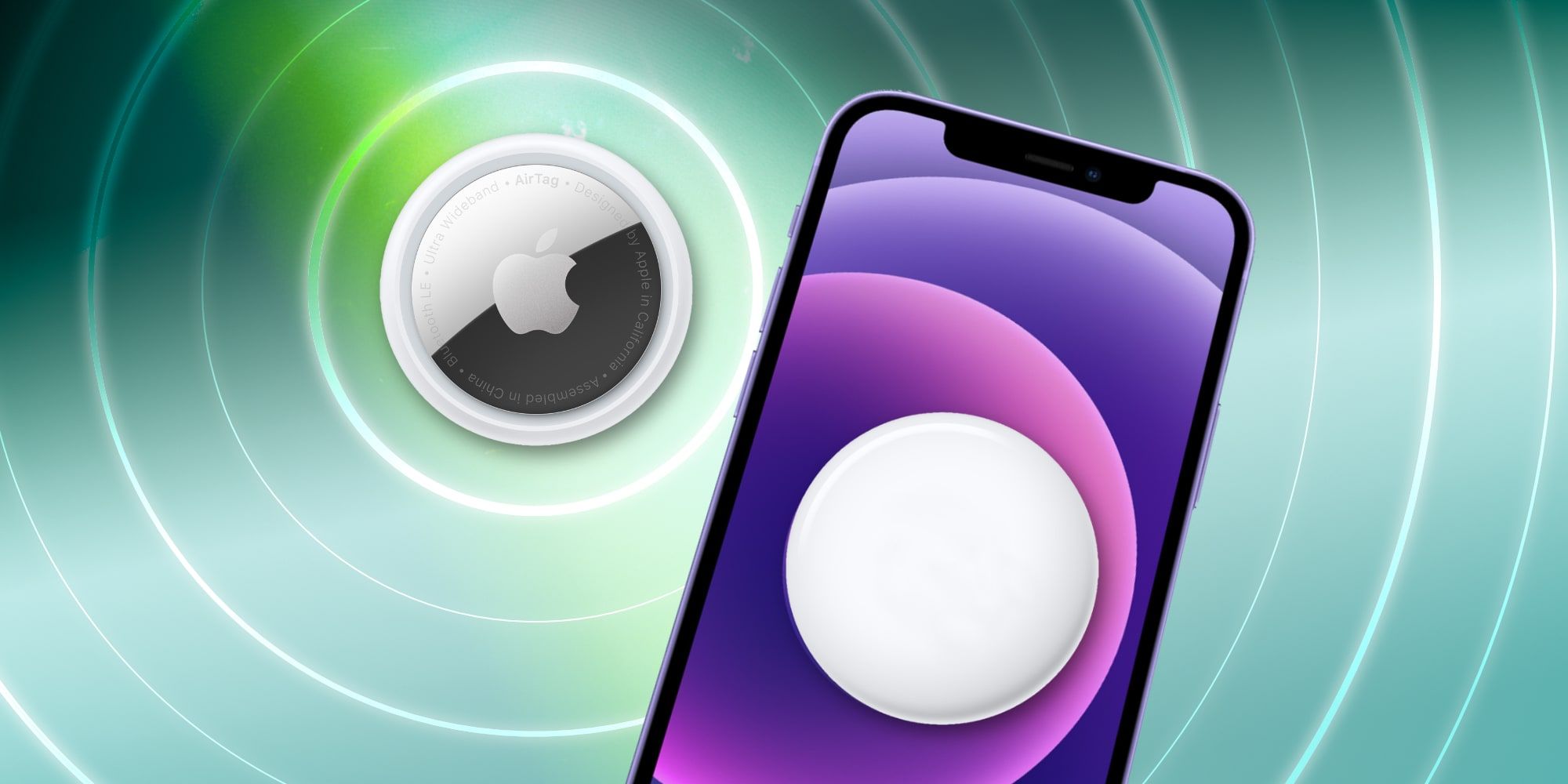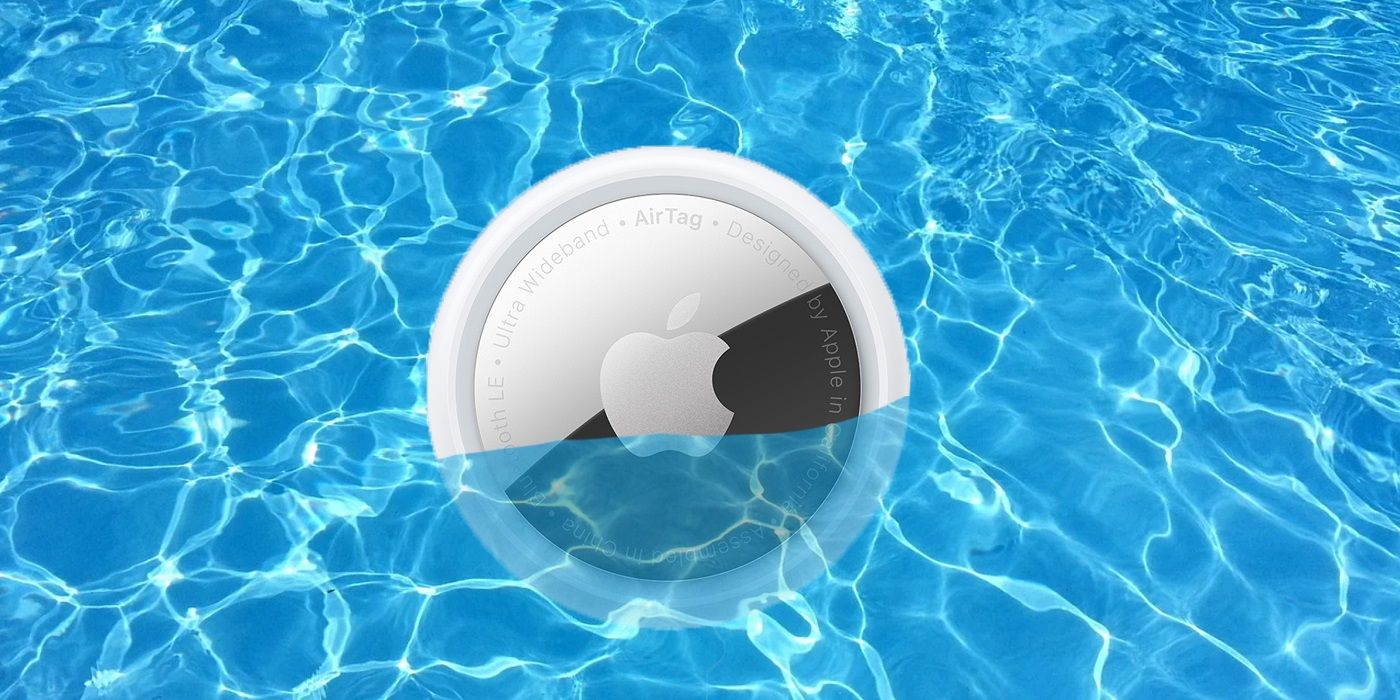Apple's advanced item tracker boasts great accuracy when paired with an iPhone 11 or iPhone 12, but there are some instances in which the AirTag can fail. In normal circumstances, a lost item can be found within a few dozen feet with both the range and heading given via Apple's Find My app. An AirTag that is farther flung will show up on a map view with directions provided. When very close by, triggering a sound on the AirTag might be all that's needed.
Precision Finding is the name that Apple gave to the Find My app's nearby search feature and it is quite appropriate in most cases. The app can display the direction and distance to a missing AirTag with an accuracy of about an inch when two conditions are met. An iPhone that contains a U1 chip is needed since this feature relies on ultra-wideband (UWB) communication. Also, the iPhone must be within range of the AirTag's Bluetooth or UWB signal, which means the searcher should be at approximately the same street address or map location. The AirTag's UWB signal is much more accurate and harder to block than a Bluetooth signal working through walls and around many objects. Even when faced with its most difficult challenge a tiny gap or thinning of the blocking material, will allow the iPhone to locate the AirTag with accuracy and ease.
In real-world testing, an iPhone 11 was able to locate an Apple AirTag in several challenging conditions. The Find My app showed a directional arrow and distance when the AirTag was placed inside various appliances and devices, while on, but not operating. For example, resting on the paper tray of a laser printer, inside an oven and washing machine posed no challenge. Inside a well-shielded microwave oven and the thick metal of an Instant Pot with the lid locked, each on but not cooking, the AirTag performed flawlessly. Even behind a microwave oven while actively cooking and beneath a large fan motor had no effect on performance, with the iPhone 11 leading directly to the AirTag with pinpoint accuracy. Placing an AirTag inside three nested steel pots topped with a large steel frying pan offered no resistance to the UWB tracking abilities of Precision Finding. The AirTag wasn't perfect, however, giving an incorrect distance in some cases, failing to provide a heading in others, and almost completely losing the signal, even when very close by, in certain situations.
Troublesome AirTag Conditions
Apparently, fast, powerful motors can scramble the UWB signal. When placed below a running Vitamix, which is a very powerful blender, the range was given accurately, but the heading never appeared. When the blender was switched off, the direction was immediately sensed and an arrow on the iPhone display pointed directly at the AirTag. Inside a refrigerator, the AirTag was findable, but the distance given was overestimated by about one foot. Opening the door showed an accurate measurement, but either the insulation or the liquids that are stored on the door shelf caused an error. While the AirTag is water-resistant, liquids do seem to be the best blocker, with the ability to almost completely hide the tracker, even at close range. In shallow water, about an inch to an inch-and-a-half deep, an AirTag can only be found when nearby. The Find My app indicated the signal was too weak until within about three feet. At that distance, a heading isn't provided, so the beacon must be found visually or by triggering the AirTag's sound.
Under a few inches of water, depending on the orientation of the AirTag, the signal becomes quite weak, requiring the iPhone to come within one foot before a distance appears. A surprising twist in the testing showed that when the AirTag was flipped, with the metal facing up and plastic side down, the underwater performance was much better. In this orientation, submerged in four inches of water the directional arrow appeared on the iPhone when over 30-feet away. The only sure-fire way to thwart Precision Finding is by wrapping Apple's tracker in flesh. Holding an AirTag fully enclosed within a hand and in the crook of a bent arm or leg, blocks communication so well that the iPhone must be placed directly beside that spot to trigger the Find My app to finally chirp happily and show the message 'here' on the screen. This is likely due to the liquid nature of the human body and possibly more effective than water due to the varying density of bones, tissue, and blood vessels providing an extra challenge to technology. Apple's AirTag handled some difficult challenges, going beyond what will normally arise with lost items, and is certainly the best solution available for above-water tracking.
Source: Apple


